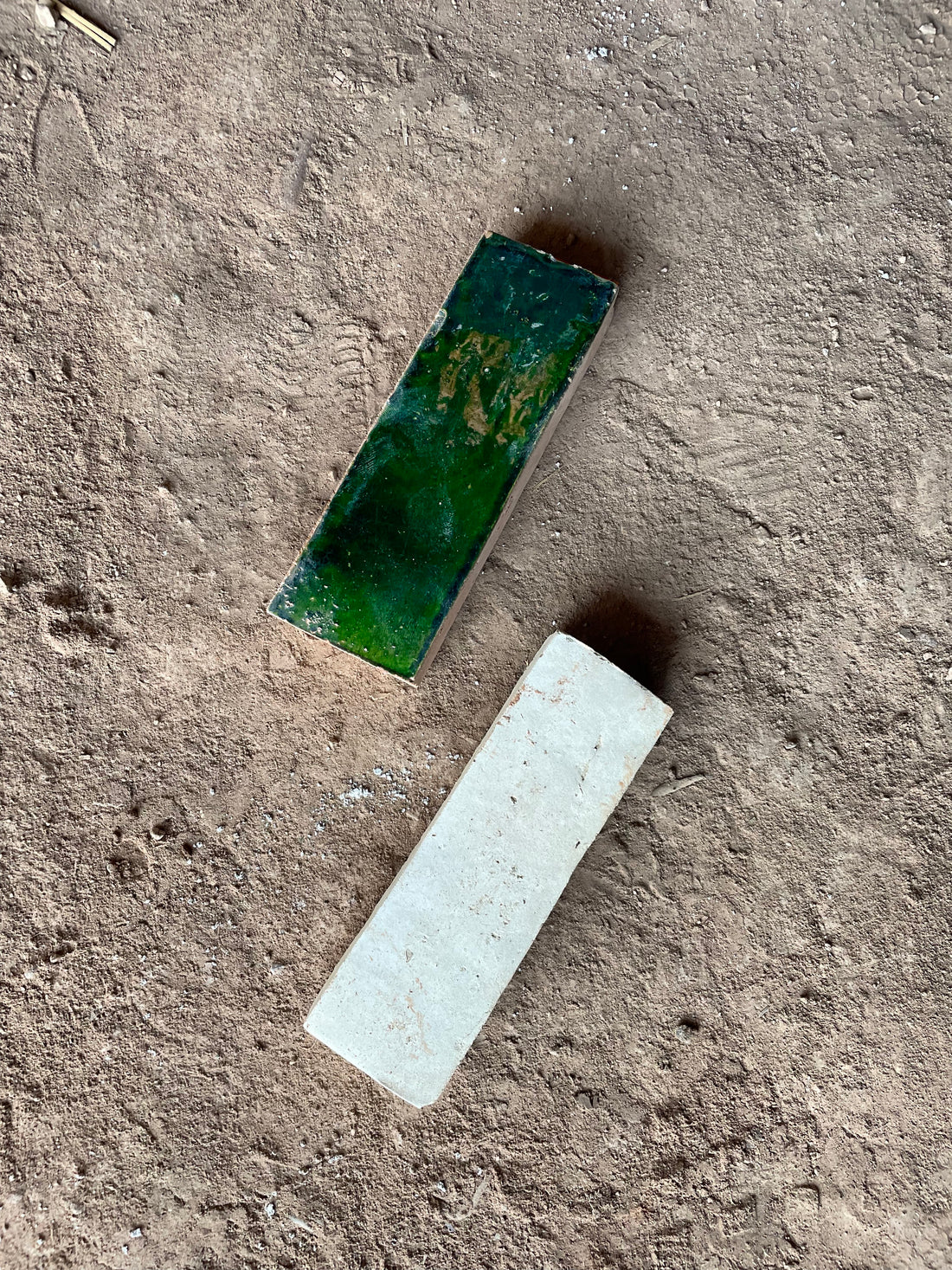Moroccan Zellige tiles, also known as zellij or zillij tiles, are a traditional form of Islamic ceramic art found in Morocco. They are handmade geometric mosaic tiles that are meticulously crafted and assembled to create intricate patterns and designs. Zellige tiles are typically made from terracotta clay and are glazed in a wide range of vibrant colors, including shades of blue, green, yellow, and white.
The process of creating Zellige tiles involves several steps. First, the clay is shaped into small square or rectangular pieces. These individual pieces are then glazed with different colors and fired in a kiln to achieve a glossy finish. Once the tiles have cooled, skilled craftsmen cut them into precise shapes and carefully arrange them to form complex geometric patterns. The tiles are set into a bed of plaster or cement, and the gaps between them are filled with a fine white plaster called "lechour" or "tarjmat."
Zellige tiles are widely used in traditional Moroccan architecture, particularly in the decoration of walls, floors, fountains, and other interior and exterior surfaces. They are commonly found in palaces, mosques, riads (traditional Moroccan houses with interior courtyards), and historical sites throughout Morocco. Zellige tiles not only serve as decorative elements but also provide functional benefits, such as cooling properties in hot climates.
The beauty and uniqueness of Moroccan Zellige tiles have made them popular worldwide. They have become a sought-after element in interior design and are often used to add a touch of exoticism and elegance to contemporary spaces.

